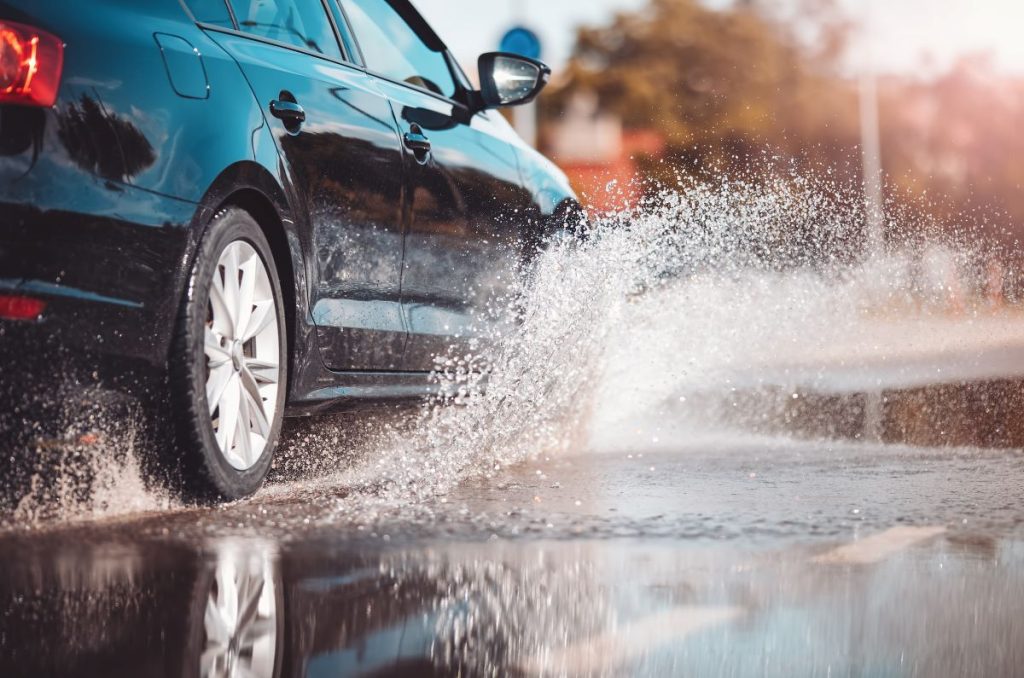
5 Refreshing Swimming Spots in and Around Johannesburg
Johannesburg may be landlocked, but that doesn’t mean you can’t enjoy a day of clear...
 20 November 2025
20 November 2025 
Driving in stormy weather can be challenging, but modern vehicles are equipped with safety features designed to help you navigate through adverse conditions. Here are some essential tips for making the most of your car’s safety tech during stormy weather, ensuring a safe and smooth journey.

Photo Source: Getty
ABS is a crucial safety feature that prevents the wheels from locking up during hard braking, allowing you to maintain steering control. This system is particularly beneficial in slippery conditions where sudden stops can cause skidding. Vehicles like the Toyota Corolla and Ford Focus are examples of cars equipped with advanced ABS systems.
When driving in the rain, apply steady pressure to the brake pedal. The ABS will modulate the braking force to prevent skidding, ensuring you can steer around obstacles safely.
ESC helps maintain your car’s stability by detecting and reducing skidding. It applies brakes to individual wheels, helping to keep the vehicle on its intended path. This feature is essential in larger vehicles like SUVs and trucks, such as the Toyota Fortuner and Ford Ranger, which are more prone to rollover risks. To benefit from ESC, drive at moderate speeds and avoid sudden maneuvers. The system will assist in maintaining control, especially on wet and slippery roads.
TCS is designed to prevent wheel spin during acceleration by adjusting engine power and applying brakes. This is particularly useful when starting from a stop on wet or icy roads. Vehicles like the Honda CR-V and Volkswagen Tiguan come with sophisticated TCS. To maximise its effectiveness, accelerate gently on slippery surfaces. The TCS will manage power delivery to ensure the wheels maintain traction, preventing spin-outs and maintaining control.
Adaptive headlights enhance visibility by adjusting the direction and intensity of the light beam based on steering input and speed. This feature is especially useful in poor visibility conditions. Luxury vehicles like the BMW 5 Series and Audi A6 are equipped with adaptive headlights – use these headlights during heavy rain or fog to improve road illumination. They pivot with your steering, ensuring the road ahead is well-lit, enhancing both your visibility and that of other drivers.
Rain-sensing wipers automatically activate and adjust their speed based on the intensity of the rainfall. This feature ensures that your windscreen remains clear without the need for manual adjustments. Cars like the Mercedes-Benz C-Class and Subaru Outback feature advanced rain-sensing wipers. Ensure the sensors on your windscreen are clean and activated. These wipers will automatically adjust their speed, providing optimal visibility during varying rainfall intensities.
TPMS alerts you when tyre pressure is low, which is crucial for maintaining traction and control. Properly inflated tyres ensure better fuel efficiency and safety. Vehicles such as the Hyundai Tucson and Kia Sportage include such systems, giving you real-time data about your tyres. It’s also important to regularly check your tyre pressures and ensure they are inflated to the recommended levels. Properly inflated tyres provide better grip on wet surfaces, reducing the risk of hydroplaning (aquaplaning).
ADAS includes a range of features like lane departure warning, blind-spot monitoring, and forward collision warning. These systems assist in maintaining safe driving practices. Vehicles like the Volvo XC60 are equipped with comprehensive ADAS and can even steer automatically. Use these systems to aid your driving – but remain attentive. Lane departure warning and blind-spot monitoring are particularly useful in poor visibility conditions, helping you stay aware of your surroundings.

Photo Source: Getty

Photo Source: Getty
By understanding and properly using your car’s safety features, you can significantly improve your driving safety in stormy weather. Stay informed, stay prepared, and please drive responsibly.
Drive South Africa is on hand with immaculately-maintained vehicles for any situation, ranging from nippy hatchbacks to plush SUVs. Whatever you need, we have it – with all the safety features you need to stay secure on the road in stormy weather. Contact our sales team today to make your rental booking.